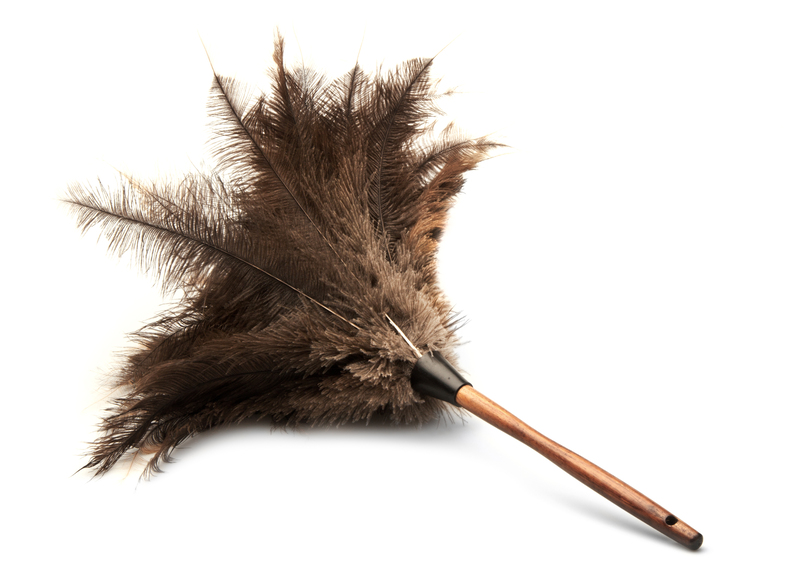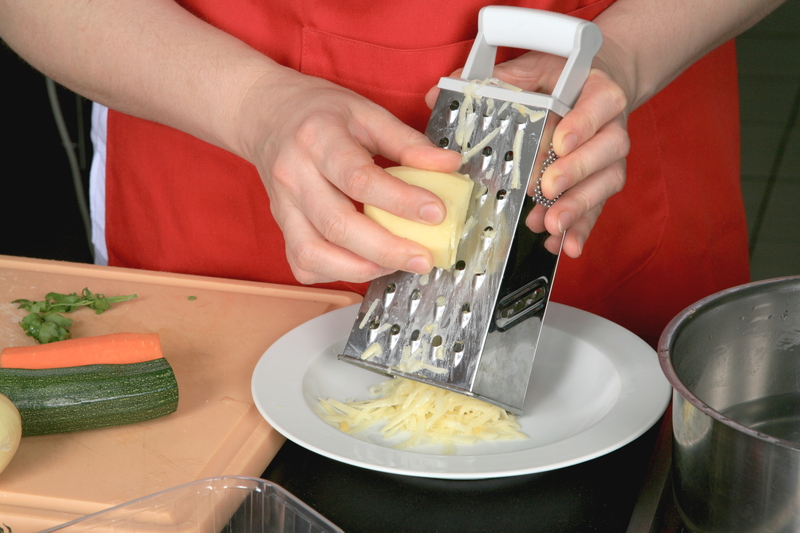Your Guide to Achieving a Mold-Free Bathroom
Posted on 15/08/2025
Your Guide to Achieving a Mold-Free Bathroom
Having a clean, healthy, and mold-free bathroom is an attainable goal for every homeowner. Mold can be unsightly and hazardous, affecting not only the aesthetics of your home but also your health. This detailed guide will provide you with actionable steps, useful tips, and effective strategies to keep your bathroom free from mold and its damaging effects.
Understanding Mold: Why the Bathroom Is Prone
Mold, a type of fungus, thrives in damp, humid environments. Bathrooms offer the perfect breeding ground due to the consistent presence of moisture from showers, baths, and sinks. Understanding the causes and risks associated with bathroom mold is the first step to securing a mold-free bathroom.
- Common Mold Types: Aspergillus, Penicillium, and black mold (Stachybotrys chartarum) are typical bathroom invaders.
- Health Risks: Mold exposure can trigger allergies, respiratory problems, and in severe cases, even infections.
- Ideal Conditions: Mold flourishes in environments with poor ventilation, high humidity, and organic material for food (like dust and soap scum).
The Signs of Mold in Your Bathroom
Detecting mold early is vital for maintaining a mold-free bathroom. Look out for these telltale warnings:
- Musty Odor: A persistent earthy or musty smell indicates mold presence.
- Discoloration: Watch for black, green, or brown spots on grout, walls, and ceilings.
- Peeling Paint: Moisture behind walls can cause paint or wallpaper to bubble and peel.
- Excess Humidity: Condensation on mirrors and windows signals high moisture, which fosters mold.

Top Prevention Strategies for a Mold-Free Bathroom
Prevention is the best cure. Apply these proven strategies to stop mold growth before it starts and enjoy a mold-resistant bathroom year-round.
1. Optimize Ventilation
Effective ventilation is the cornerstone of mold prevention. After every shower or bath, run the bathroom exhaust fan for at least 20 minutes. If there's no fan, consider installing one or open windows to let fresh air circulate. Ventilating your bathroom removes excess humidity and helps to keep surfaces dry.
- Tip: Invest in a high-quality, quiet exhaust fan with humidity sensors for automatic operation.
- Open windows: When privacy allows, open windows to boost natural circulation.
2. Control Moisture and Humidity
Since mold relies on moisture to grow, reducing humidity is essential for a mold-free bathroom. Use a dehumidifier if your bathroom is frequently damp or has poor air flow. Aim for a humidity level below 50% for optimal results.
- Dry Towels Promptly: Hang towels and bath mats to dry after each use.
- Mop Up Water: Wipe down surfaces such as shower walls, tubs, and sinks after bathing.
- Fix Leaks Fast: Address drips or plumbing leaks immediately to prevent lingering moisture.
3. Choose Mold-Resistant Materials
When renovating or updating your bathroom, opt for materials that deter mold:
- Mold-Resistant Drywall: Also known as greenboard, it's designed for high-humidity rooms.
- Mildew-Resistant Paint: Use specially formulated bathroom paints for walls and ceilings.
- Non-Porous Surfaces: Tiles, glass, and solid-surface countertops resist mold better than wood or natural stone.
4. Keep Bathroom Surfaces Clean
Regular cleaning disrupts mold's ability to establish itself. Clean bathroom surfaces using mold-inhibiting solutions and pay special attention to tiles, grout lines, and under-sink areas.
- Weekly Chores: Scrub tiles, sink, and tub at least once a week.
- Deep Cleaning: Every month, use a bleach-based, hydrogen peroxide, or vinegar solution for a deeper clean.
The Best Cleaning Techniques for a Mold-Free Bathroom
Even the cleanest bathrooms may occasionally discover unwanted mold growth. Here's how to efficiently remove it and maintain a spotless space:
Natural Mold Removal Solutions
- Vinegar Spray: Pour undiluted white vinegar into a spray bottle and coat affected areas. Let sit for at least an hour, scrub with a stiff-bristled brush, then rinse and dry thoroughly.
- Baking Soda Paste: Mix baking soda with a small amount of water to create a paste. Apply to moldy areas, scrub, and rinse. Baking soda not only kills mold but also deodorizes surfaces.
- Hydrogen Peroxide: Spray 3% hydrogen peroxide onto stained sections, allow to bubble, then scrub and rinse clean.
Chemical Mold Removers
- Bleach-Based Cleaners: Effective for killing mold on non-porous surfaces, but use with caution and proper ventilation.
- Commercial Mold Removers: Numerous products are available specifically for bathroom mold elimination--always follow manufacturer instructions.
Important: Never mix bleach with ammonia or vinegar, as this can release dangerous fumes.
Addressing Mold in Grout and Sealant
Grout lines, caulk, and sealant strips are notorious for harboring mold due to their porous nature and tendency to trap moisture. For a truly mold-free bathroom, regular maintenance and prompt repair are crucial.
How to Remove Mold from Grout
- Scrub with Baking Soda Paste: Apply paste, scrub with a toothbrush, rinse thoroughly.
- Try Hydrogen Peroxide: Spray on stubborn stains and let sit for 15 minutes before scrubbing.
- Replace Damaged Grout: Severely stained or crumbling grout should be removed and re-applied with a mold-resistant grout.
Refreshing Caulking to Prevent Mold
- Inspect Caulk Regularly: Look for cracks, discoloration, or peeling.
- Remove and Reapply: Peel away old caulking, clean the area, and reapply a waterproof, mold-resistant caulk.
Design Tips for a Mold-Free Bathroom
In addition to cleaning and maintenance, consider these bathroom design tips that contribute to a mold-free space.
- Install Adequate Lighting: Mold grows best in dark, damp locations. Ample natural or artificial lighting helps inhibit its spread.
- Streamline Storage: Avoid cluttering surfaces with unnecessary items; excess objects can trap water and boost humidity.
- Choose Open Shelving: Open shelves promote airflow and minimize hidden, moisture-prone spots.
- Use Shower Doors Instead of Curtains: Glass doors prevent water from seeping onto floors and walls, reducing mold risk.
- Upgrade Fixtures: Opt for faucets and showerheads with anti-leak technology to prevent gradual water damage.
Daily Habits to Ensure a Mold-Free Bathroom
Simple daily routines can dramatically reduce the risk of mold returning to your bathroom.
- After Showering: Squeegee water from shower walls and glass to speed up drying.
- Keep the Door Ajar: Allow additional airflow post-shower or bath.
- Remove Damp Items: Take out wet towels, bathmats, and sponges so they can dry completely elsewhere.
- Check Moisture-Prone Areas: Pay attention to under-sink cabinets, behind toilets, and any places moisture can persist unseen.
When to Seek Professional Help
While most mold issues in the bathroom can be controlled with vigilant cleaning and prevention, some situations may require expert intervention:
- Mold Spreads Rapidly: A patch that reappears or spreads quickly could indicate hidden water damage.
- Health Symptoms Persist: Unresolved allergies, coughing, or skin irritation may be due to underlying mold colonies.
- Extensive Infestations: If visible mold covers more than 10 square feet, call a professional remediation service.
- Structural Damage: Warped flooring, falling tiles, or soft drywall can signal mold-related deterioration.

Frequently Asked Questions About Mold-Free Bathrooms
-
Q: What is the best way to keep my shower mold-free?
A: Squeegee walls after each use, use a daily shower cleaning spray, run the exhaust fan, and deep clean with vinegar or baking soda weekly. -
Q: Can mold grow behind tiles and what should I do?
A: Yes. If you suspect moisture has seeped behind tiles due to loose grout or caulk, remove affected tiles and replace them. Seek professional help if the spread is extensive. -
Q: Are there paint options that prevent bathroom mold?
A: Yes! Use paint labeled specifically as "bathroom," "anti-mold," or "mildew-resistant." These paints contain additives that inhibit fungal growth. -
Q: How dangerous is black mold in the bathroom?
A: Black mold can be hazardous, especially to those with allergies or compromised immune systems. Prompt removal and prevention are critical.
Final Thoughts: Your Path to a Mold-Free Bathroom
Achieving a mold-free bathroom doesn't require constant scrubbing, but rather the right combination of design, vigilant maintenance, and a few simple daily habits. By controlling moisture, ventilating thoroughly, choosing mold-resistant materials, and responding quickly to any signs of growth, you can enjoy a healthier, cleaner bathroom for years to come.
Put these comprehensive prevention and cleaning tips into practice, and take the first step toward a permanently mold-resistant bathroom today!




